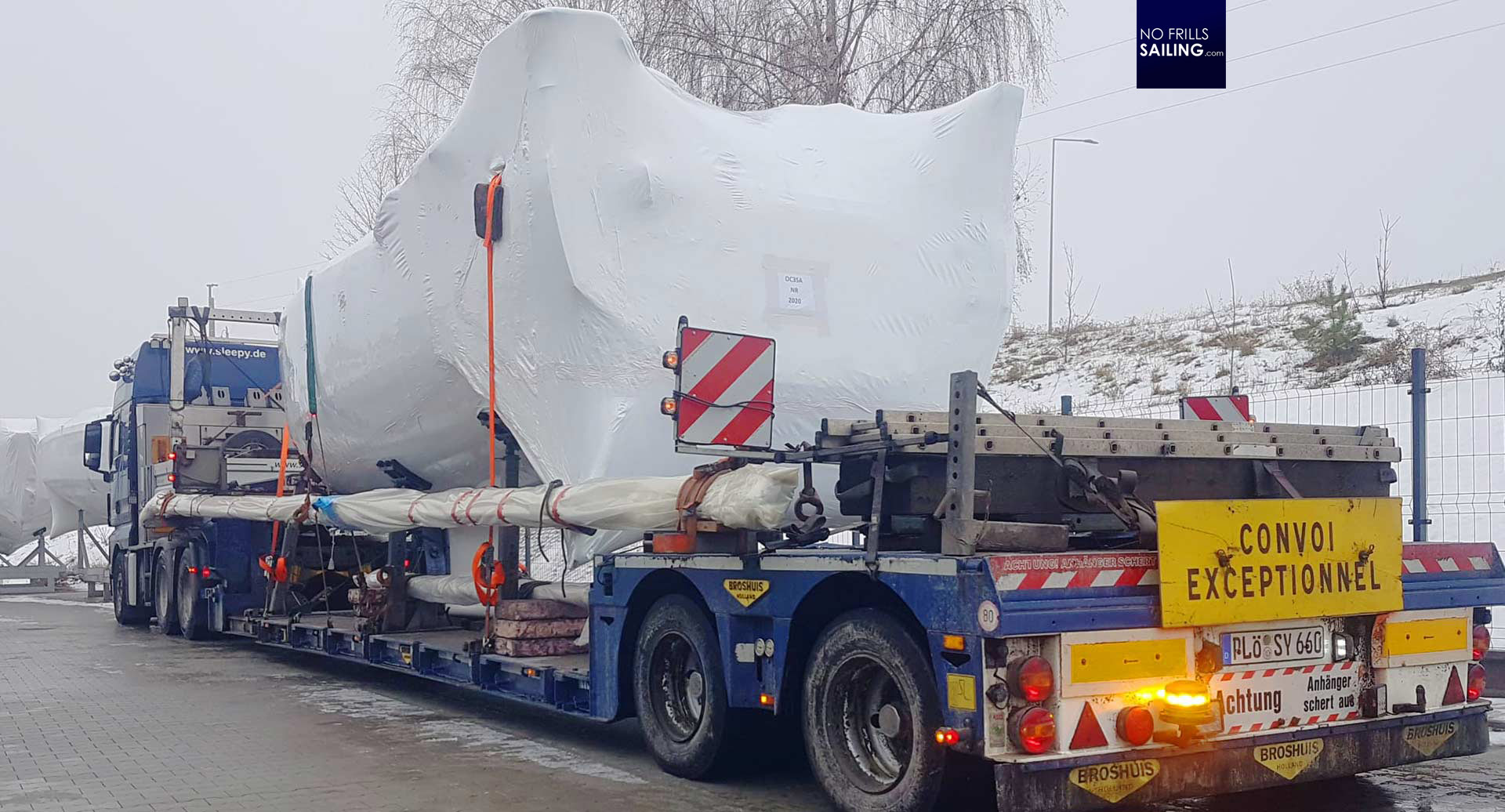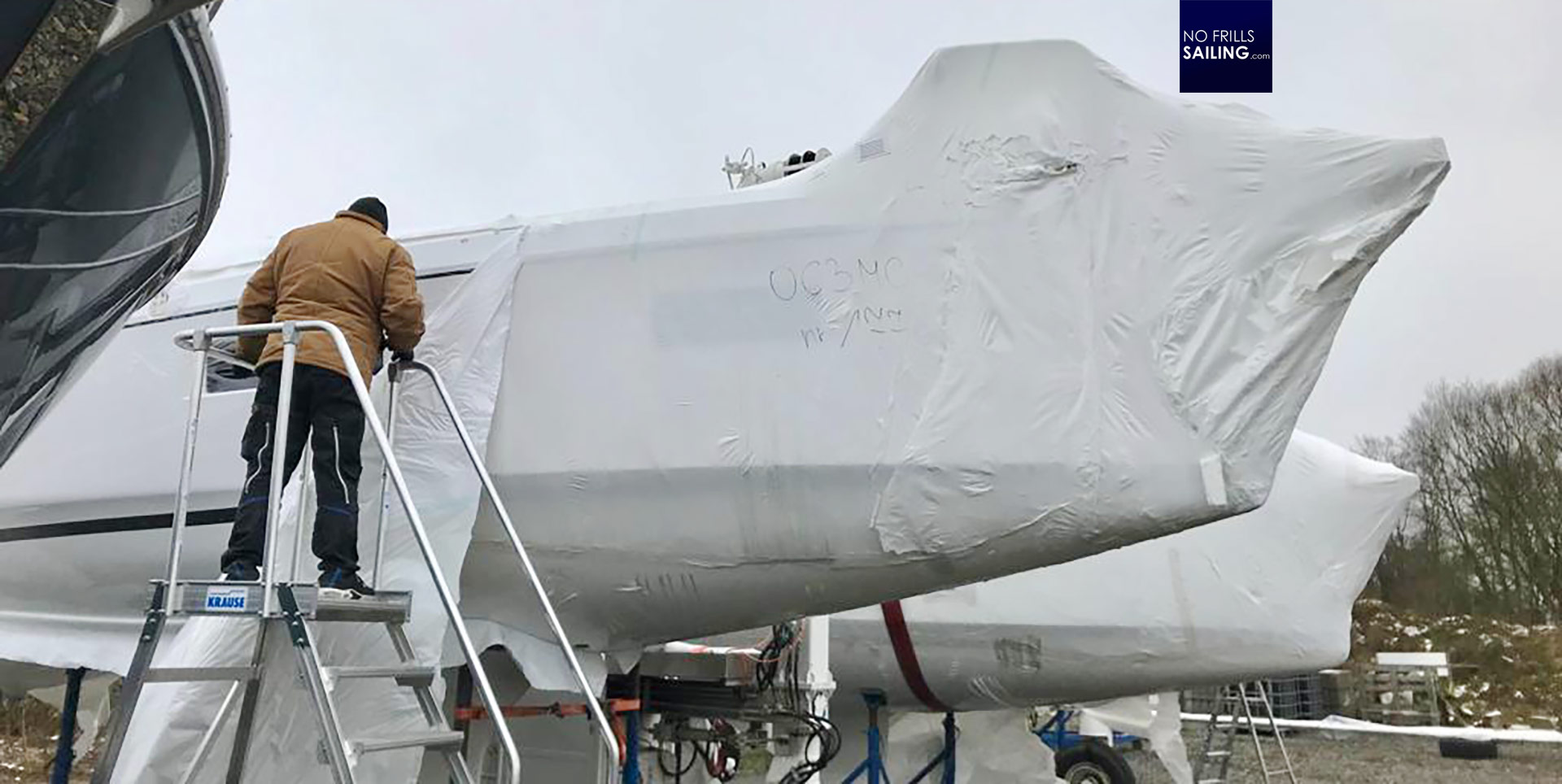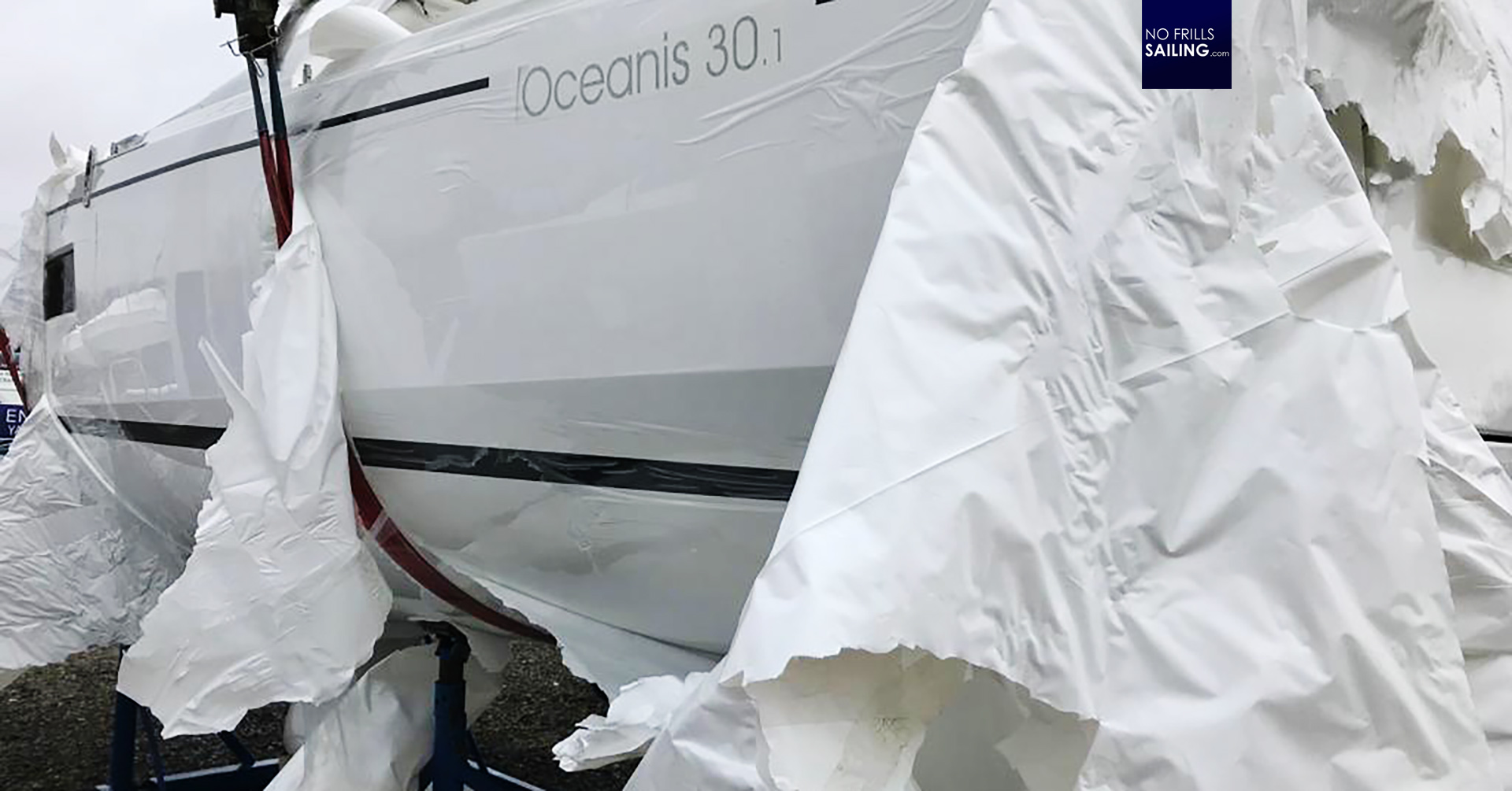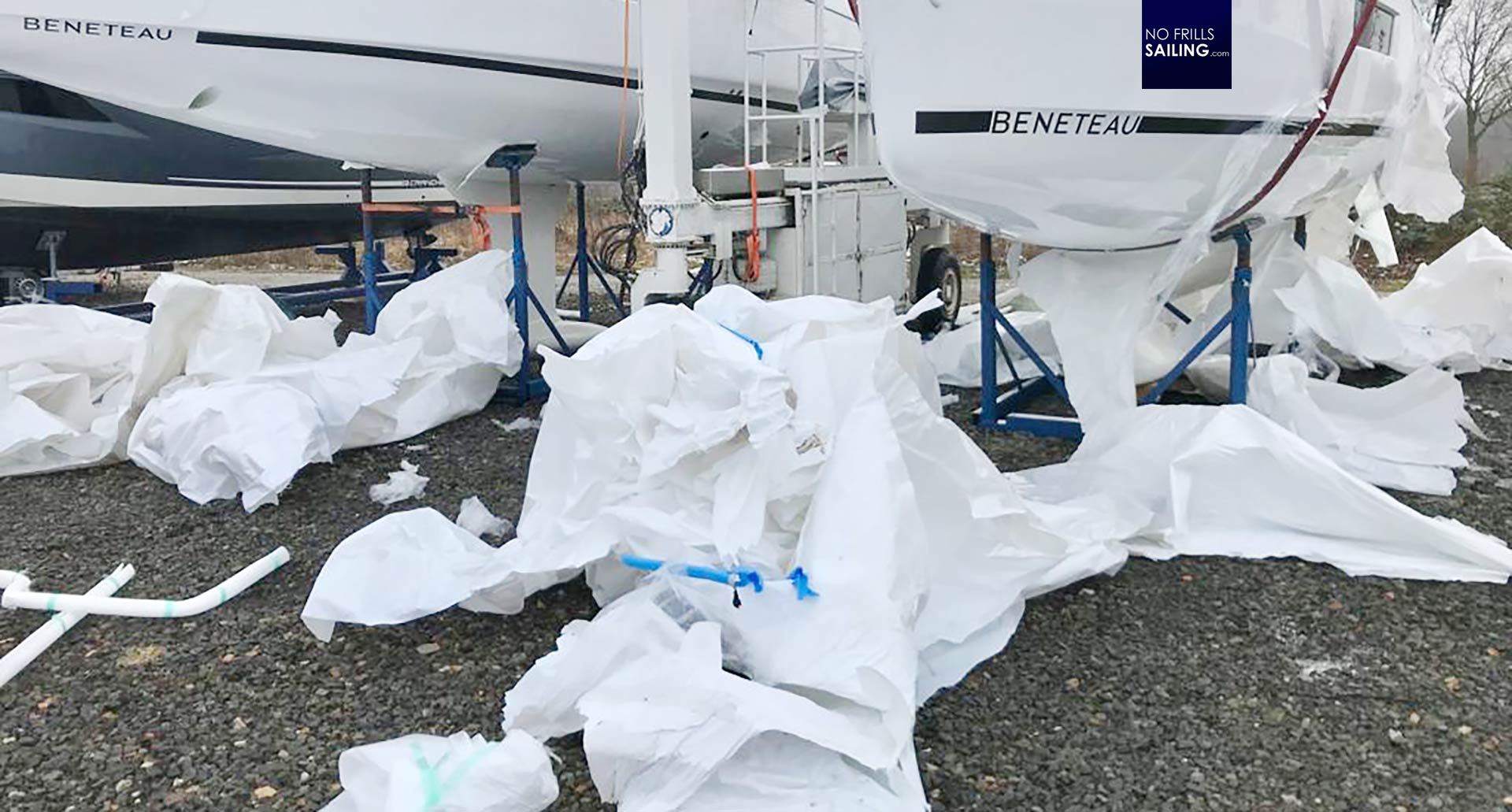Last week we´ve received our first sailboats out of the shipyard for this year. This is always a nice moment as I am sending pictures to our customers, delivering the good news. Apart from the great joy and relief, that after such a long waiting time their dream yacht is finally on her way, the feedback often also contains a simple question: “Why is the boat wrapped like a huge candy in so much plastic?” It´s a valid question, even more on the background of an ever growing discussion about sustainability, waste-avoidance and a strive towards a “green” future.

Naturally, there is no simple answer, no “black” nor a “white”. With this article I´d like to explain why boats are still wrapped in plastic and why it is so difficult to substitute this code of conduct. I´ve asked some shipyards to comment on this, without feedback though. I know (at least for “my” brands) that there are efforts to come up with a solution, but I also understand that nobody wants to get “exposed” in this matter. Anyway, let´s dive into the topic.
A well protected present
To understand why the boats are almost always wrapped in so much plastic, you must understand that virtually no shipyard is situated on the coast. This is valid at least for the big production boat companies. But also smaller shipyards, like Nautor´s Swan, put their boats on truck transport and have them wrapped in plastic. As the subline of this article goes: “The first voyage of a new boat almost always is on tarmac.”

Looking for example at Beneteau, my brand, this means that a new boat to be handed over in the Baltic Sea will have to travel some 1.300 kilometers on road to the location of commissioning. A boat going from the Vendeé to the Adriatic will have to travel some 1.600 kilometers. In many countries road transport must not take place on a highway, the trucks need to go on state roads or even small country lanes. Have you ever been driving a car in France? There´s a roundabout literally every 500 meters … loads of possible hazards and sources of damage underway.

A road transport transversing Europe, or at least two or three countries, will take at least 3 to 5 days. The precious brand-new yacht simply needs to be protected. There are overhanging branches of trees which can cause severe damage to the hull, stone chipping by passing cars. I´ve seen yacht transport trucks passing road signs or traffic lights with literally one centimeter of clearance. I don´t think that any client – as environmentally aware he might be – would accept his new boat with a “sanded” and scratched open hull. In this, the yachts need to be protected.
How the Transport Wrap is fitted
My colleagues cut open the covers of our newly arrived Oceanis and start to unwrap. It´s a real effort that takes a lot of time. The plastic used is a special shrink wrap. In the shipyard, after the final check of the new boat, this wrap is applied. I´ve done it myself a lot of times and so I know very well how much time it needs: The bigger the boat, the more complicated the process. The foil is put loosely over the boat and fixed by a special tape. Then the fun part starts: Let´s fire it up!

A large “pistol”-like gas-burner is lit up, connected to one bottle of liquefied natural gas. Meticulously and very cautiously this flame is brought near the foil. “Activated” by the heat of the burner, it will start to shrink in size thus neatly nestle to the boat. Naturally, handling with an open flame literal centimeters away from a boat made of plastic means that those people are specially trained not to melt or burn the yacht. In the end, adding up to the fact that a mountain of plastic waste is created, it takes a load of energy to make the foil shrunk to size.

Underneath certain areas of the boat´s hull, surplus layers of protective foil, sometimes also thick, foamy layers, are applied. For example to protect the most exposed areas, decorative elements or the extreme outer edges which are most prone to be hit by roadside hazards. For a boat like these 30 or 34 feet yachts I´d say it takes several hours to have it wrapped. For my colleagues unpacking those two boats, they started around mid-day to unpack – and finished well after sunset around 6 p.m..
Alternatives to Plastic Transport Wrap
“Well, that´s really a mess!”, you might think looking at these pictures. And you are right: It´s a single-use one-purpose plastic. Sheer mountains. The area covered by the wrap is double and for some yacht-sizes even quadruple the size of my flat. But as we have already established: The boats must be protected, traveling such distances without protection isn´t an option. So what could be done to reduce or even avoid producing that amount of waste?

One thing could be a “wrap free”-option for the customers: Clients could decide whether they want a protective wrap or not. This could work for short-distance boat transports. But if chosen by the customers, who will then compensate for transport-damage? Will the customers agree to pay higher insurance premiums? I doubt it. Another alternative could be the substitution of the plastic foil with a bio-degradable form of wrap. I am sure that there are efforts underway to come up with such a material. Right now I am not aware of an alternative “bio-plastic-wrap”.

What about multi-use transport tarps? As the boat-types always have the same sizes, one could come up with a tarp of some kind that is used for the transport and then sent back to the shipyards. This could be an alternative if those tarps are made to snug onto the boat´s surface as tightly as the shrinking plastic can be. Imagine the damage done by the constant flutter or a lose tarp. A system of return-logistics should be put into place. A huge effort for a shipyard: Imagine Beneteau, producing around 2.000 to 3.500 units a year over a product-line of currently 35 different types (and thus sizes) of boats …. After six hours of two people´s work, the shrink wrap of two small-sized Oceanis had been removed, collected, packed and readied to be put to being recycled (hopefully).
Sustainable sailing?
Talking about sustainability and a “green” product is en-vogue right now. And right so since our environment desperately needs a reduction of pollutants, especially plastic waste. In reality it indeed is a long, long way. Sailing may appear to be “green” since propelling the yacht by wind power is arguably the most sustainable way of locomotion on the water. But: Until GRP can be fully recycled it´s still a long way to go. The first serial production boats with such materials are in the water alreday and efforts are underway to substitute fibers with natural materials. I know from my everyday´s job that the price tag attached to a boat is – more so in a time of inflating prices – one of the biggest issues. Clients try to get down the price as much as possible: Are you really willing to pay even higher prices for “green sailing”?

What it needs is a fundamental change in our whole system. It´s not just the boating industry, the carmakers or other specific branches constantly in the eco-crosshairs. Preparing tonight´s lunch for example I try out my new garlic-rasp. It´s wrapped in plastic. Like literally everything we buy. I know, it´s the small steps which add up and it takes role models to prove that alternatives are possible. Well, maybe my industry will come up with such solutions. But for now, I fear, we will have to accept that our GRP plastic-made dream boat comes wrapped in a mountain of plastic too.
Articles which might be of interest:
Electric Avenue: An all-electric boat with recyclable resin
Sustainable boatbuilding: Eco 750 project
Yacht transport: A boat´s first voyage is always on a road
